Transmission Line Plan To Cut Through Desert Wetland
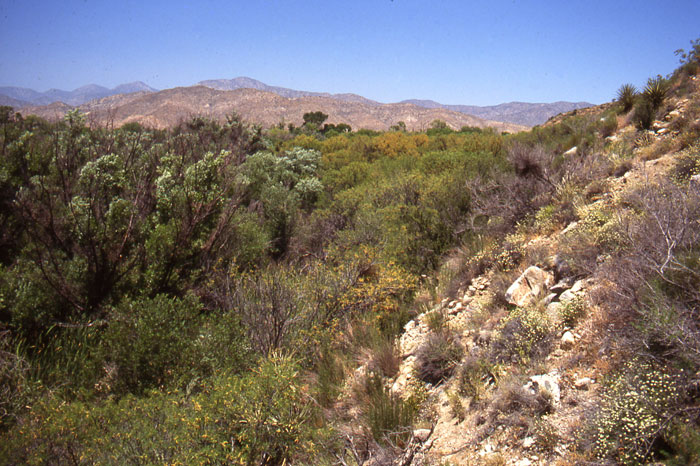
Update: March 10, 2010 - DWP drops plan to build 85-mile power transmission line across the desert. Environmental groups opposed the $800-million Green Path North Transmission Line because it would have crossed wilderness preserves and scenic ridgelines. See Los Angeles Times.
March 2, 2009 - The Los Angeles Department of Water and Power has proposed another route for its controversial Green Path North project that would bypass pristine desert land in the High Desert and closely parallel the 10 Freeway. But the new plan opens up a new can of worms. See the story in the San Bernardino Sun >> here.
December 12, 2008, Big Morongo Canyon north of Palm Springs, California -
Big Morongo Canyon Preserve is a 31,000 acre green oasis of shimmering willow and cottonwoods, marshes, and desert uplands in the Little San Bernardino Mountains, right on the transition between the Mojave Desert to the north and the Colorado Desert (a part of the Sonoran Desert that includes much of southern Arizona) to the south. In 1982 the Bureau of Land Management (BLM) designated the place as an Area of Critical Environment Concern. The site is famous among birdwatchers for its unusual riparian birds and desert species, and is also home to many unique reptiles.
But trouble is brewing for this little paradise, another misplaced effort at increasing domestic energy production with no forethought to the environment. The City of Los Angeles Department of Water and Power (LADWP) has proposed a 500-kilovolt (kV) transmission system that would bring electricity generated in Imperial County to Los Angeles. The project was ironically dubbed "Green Path North" because it will transport electricity from future utility scale solar and wind power plants out in the deserts. But little of this grand scheme is actually going to be "green" for on-the-ground plants, wildlife, and rare habitats.
The Green Path North powerline would connect substations to be built near Palm Springs and Hesperia in San Bernardino County. LADWP, Imperial Irrigation District, and Southern California Public Power Authority submitted a right-of-way application to BLM in December 2006 to access public lands -- OUR lands. We do have a say in this.
See www.stopgreenpath.com for more information and ways to fight the destruction of desert ecosystems.
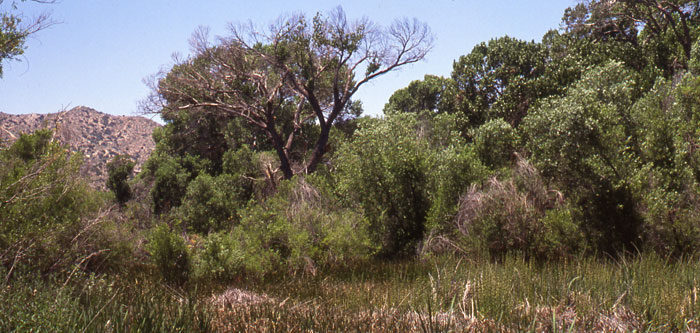
Cottonwoods, Rare Birds
Big Morongo Canyon Preserve is home to the very rare Least Bells' vireo, as well as Yellow-breasted chat, Summer tanager, Southwestern willow flycatcher, Yellow warbler, Bighorn sheep, Desert tortoise, Arroyo toad, and Triple-ribbed milkvetch.
I hiked the area one June, enjoying the aroma of Clematis blooming on green Fremont cottonwoods and willows along a stream. Honey mesquites were bursting with yellow flowers. Western whiptail lizards scurried through the leaf litter. A boardwalk stretched through lush cattail and sedge marshes. The birding was excellent -- Vermillion flycatchers were singing in the riparian groves, Common yellowthroats called in the marshes, and a Great Blue heron roosted on a tree. House wrens and Kestrels also showed up.
Rocky hills of pink granite nearby were clothed with such plants as California buckwheat, Creosote, Bursage, Buckhorn cholla, Beavertail, Mojave yucca, and Ephedra. Side-blotched lizards basked on rocks, and along a trail I found a beautiful Red Diamond rattlesnake, lying partly under a boulder. The fat snake was docile and did not rattle, and after photographing it I left it alone and walked on.
See more: www.bigmorongo.org
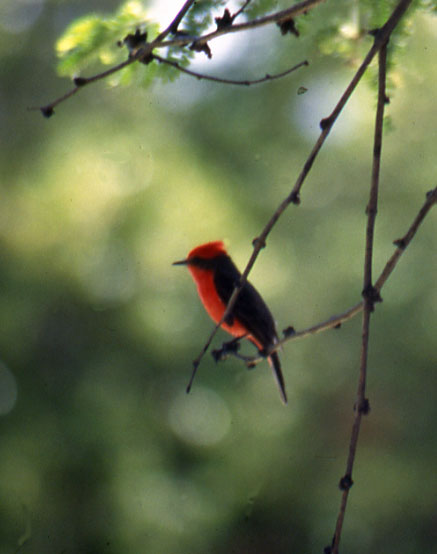
^Vermillion flycatcher.
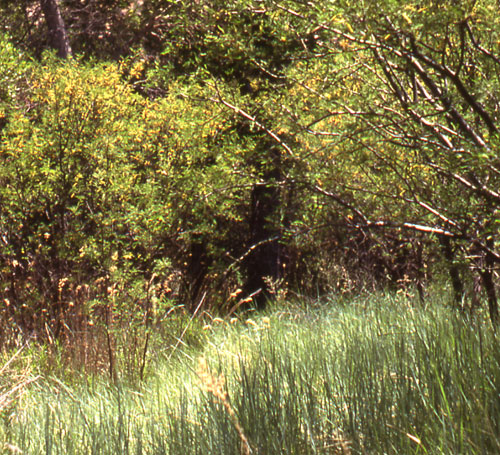
^Honey mesquites in lush riparian.
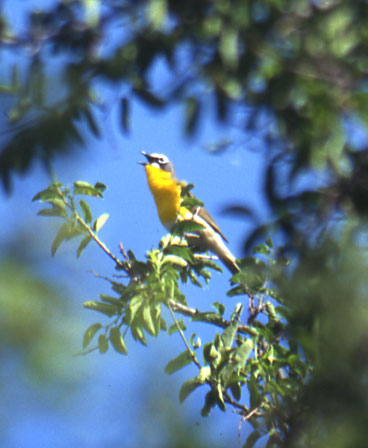
^Yellow-breasted chat singing.
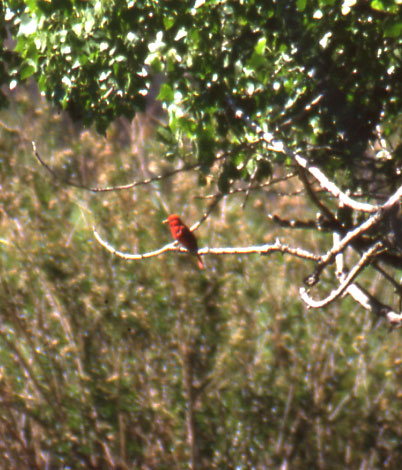
^Summer tanager.
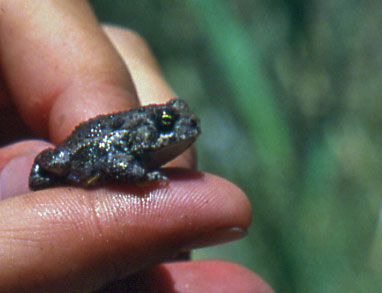
^A little California treefrog (Hyla cadaverina) from the marsh.
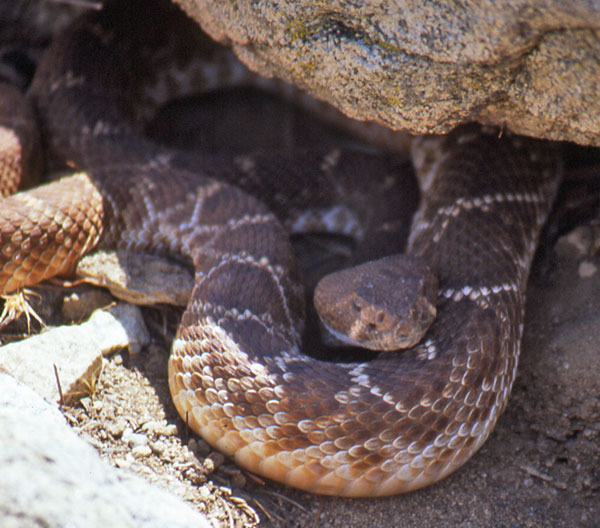
^Red diamond rattlesnake (Crotalus ruber).
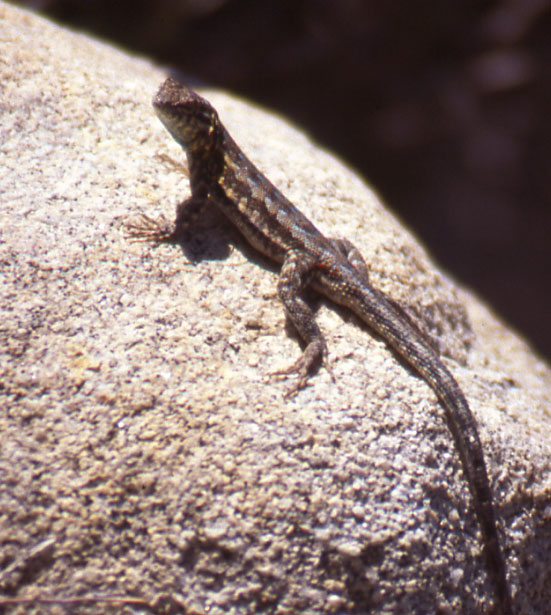
^Side-blotched lizard (Uta stansburiana).
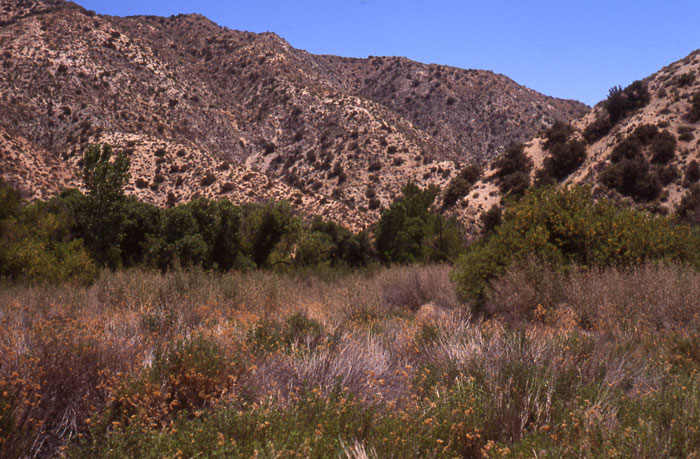
^Mesquite, willow-cottonwood groves, and pink granitic hills make for a high diversity of habitats in the desert at Big Morongo Canyon.
HOME..........NEWS............Solar in the Desert
